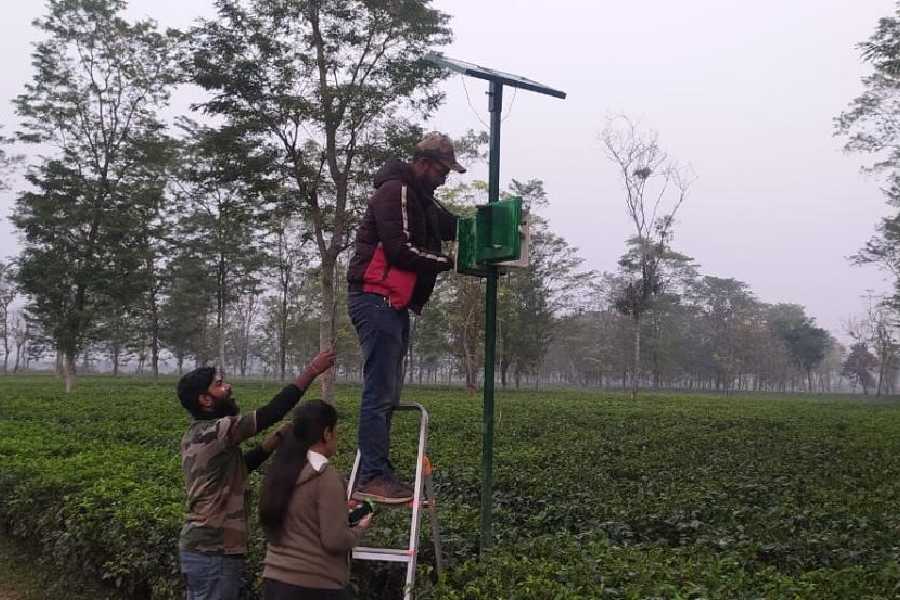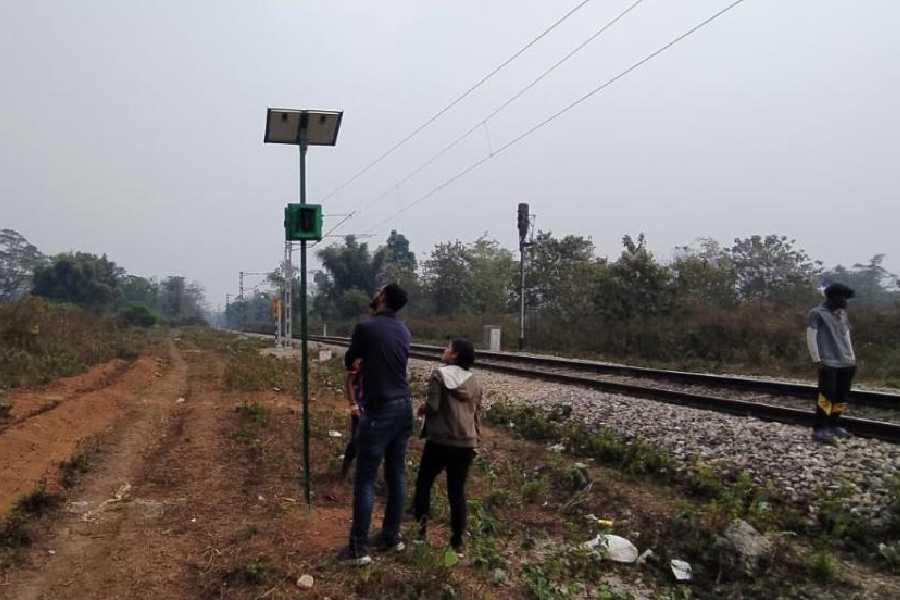The forest department will install a new set of sensors, which will be able to detect elephants at a wider range from the railway tracks compared to the existing ones, and send real-time alerts to the railways to mitigate accidents in a pocket of north Bengal.
The artificial intelligence-driven sensors have a range of over 200m. An existing set of sensors devised by the railways covers a part of the accident-prone railway corridor between Siliguri and Alipurduar. Though they are capable of sending real-time alerts, the railway sensors have a range of only 10m, said foresters.
“The sensors designed by the railways have optical fibres. If any wild animal comes within 10m of the railway tracks, an alert message is passed to the station manager of the nearest railway station and the movement of trains on the tracks are controlled,” said a forest official.
“The railway sensors are underground, while the new devices are overground. The new sensors, which have a range of more than 200m, are calibrated to detect an animal the size of an elephant,” said the official.
The new sensors have been designed by a wildlife research agency. A pilot project that started in November 2022 saw over 40 pairs of sensors installed on both sides of railway tracks along a 6km stretch in the Jalpaiguri forest division that cuts across six tea estates.
The devices have sent more than 100 timely alerts, said foresters and people behind the technology.
“The pilot phase I was successful. That is why we gave the nod for phase II,” said Bhaskar J.V., chief conservator of forest (wildlife) north Bengal.
As part of phase II of the project, 60 more pairs of sensors will be installed along railway tracks in two areas — inside the Chapramari Wildlife Sanctuary near Gorumara National Park and a stretch from Damanpur to the Dima bridge near Rajabhatkhawa, in Buxa Tiger Reserve.
“The areas are elephant corridors and prone to fatal accdents. Since 2010, more than 25 elephants have died in rail accidents in these areas,” said Koustav Choudhury, executive director, Solitary Nature and Animal Protection Foundation (SNAP), the organisation that is providing the technology.
“The GPS-connected device, called Elesense, uses a combination of four sensors to detect elephants. It is driven by artificial intelligence. An exhaustive set of elephant patterns is fed into the system. It tallies any movement it detects with that data and any confirmation triggers a real-time alert to a control centre, which then alerts railway and forest officials through a WhatsApp group,” said Choudhury.
The railway sensors (the ones with 10m range), part of the Intrusion Detection System, are installed along a 70km stretch between Hasimara and Chalsa.
“The aim is to cover all the elephant corridors in the section in future,” said Sabyasachi De, spokesperson for Northeast Frontier Railway.

Sourced by the Telegraph
The railway link between Alipurduar and Siliguri, around 160km long, passes through many stretches of reserve forests and tea estates that are interspersed with elephant corridors.
Since 2002, when the route was upgraded from metre gauge to broad gauge, around 90 elephants have died on tracks.
On November 27 last year, three elephants, including a six-month-old calf, were mowed down by a speeding goods train between Rajabhatkhawa and Garopara stations in Alipurduar.
The field inspections for the second phase of installation of the new sensors are being done. The sensors should be installed by June, Choudhury said.
The sensors are installed in pairs, one on each side of the tracks, on top of a 6ft-high pole. Each device has in-built cameras as well.
The project is being funded by the US-based Voices for Asian Elephant.
“The devices have been very useful in sending real-time alerts. We have not had a fatality in that section since the installation of the devices,” said Vikas V., divisional forest officer of Jalpaiguri.
Apurba Sen, field director of Buxa Tiger Reserve, said: “The stretch inside BTR where the sensors will be installed is a very sensitive zone. We are banking on the new technology.”
